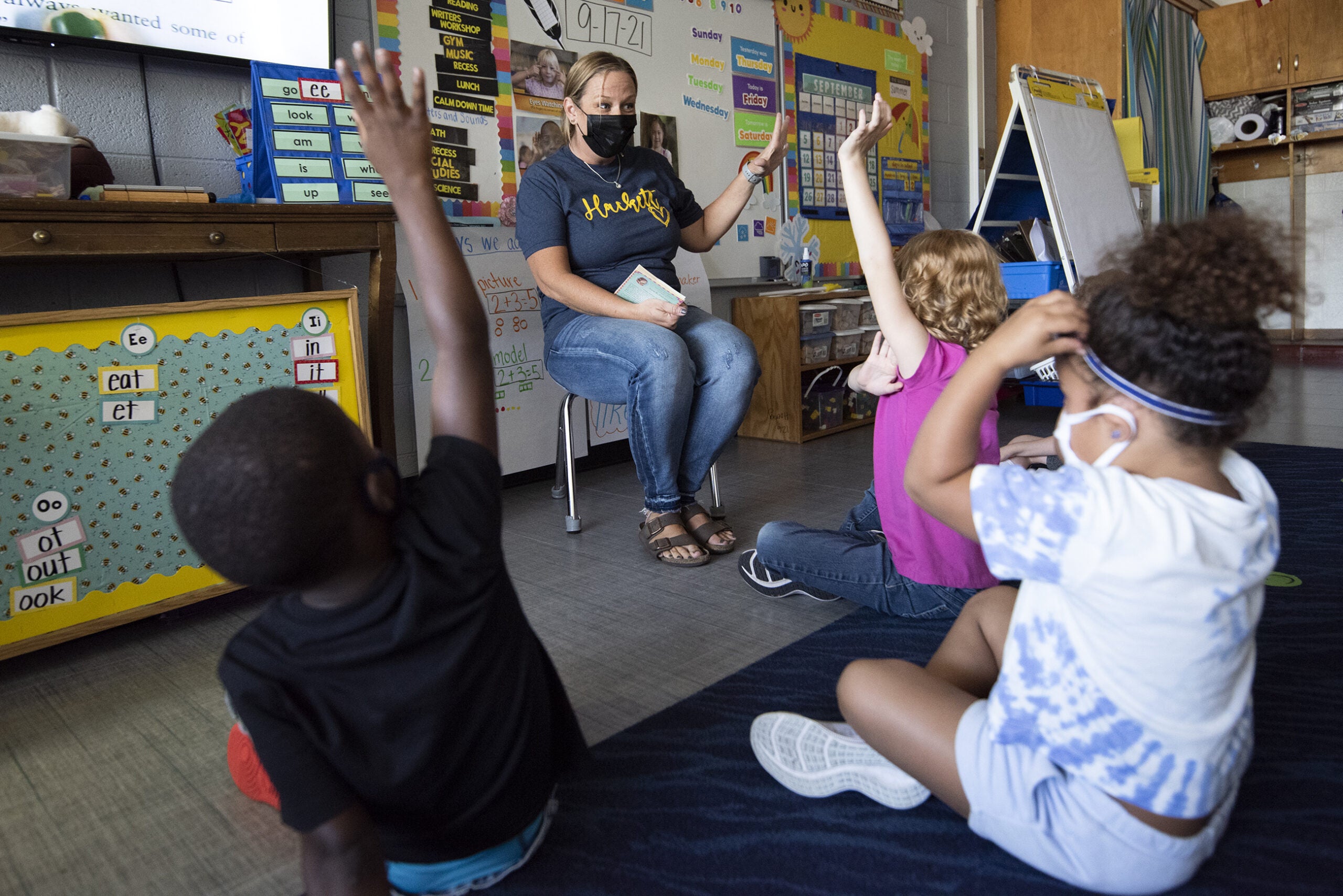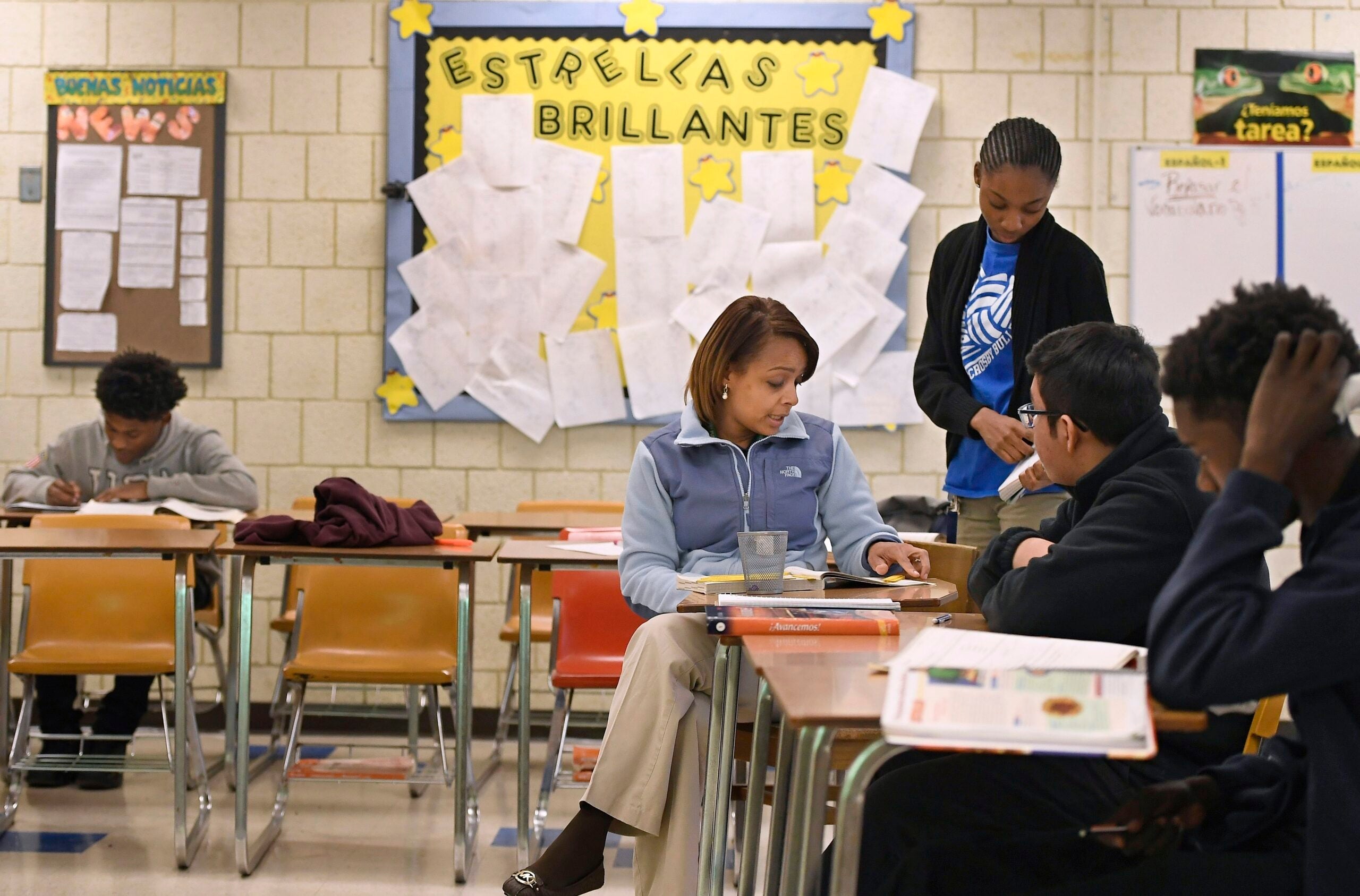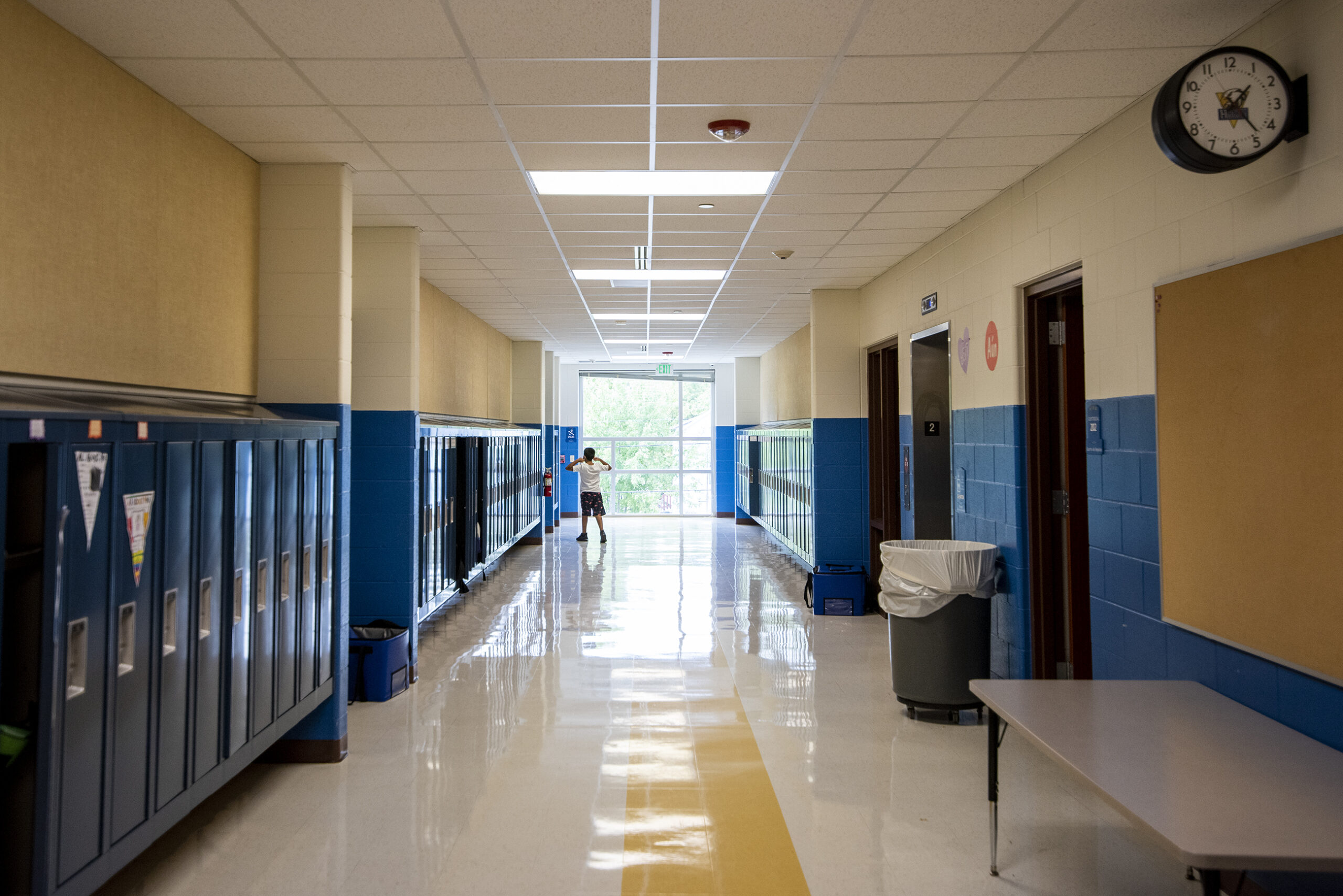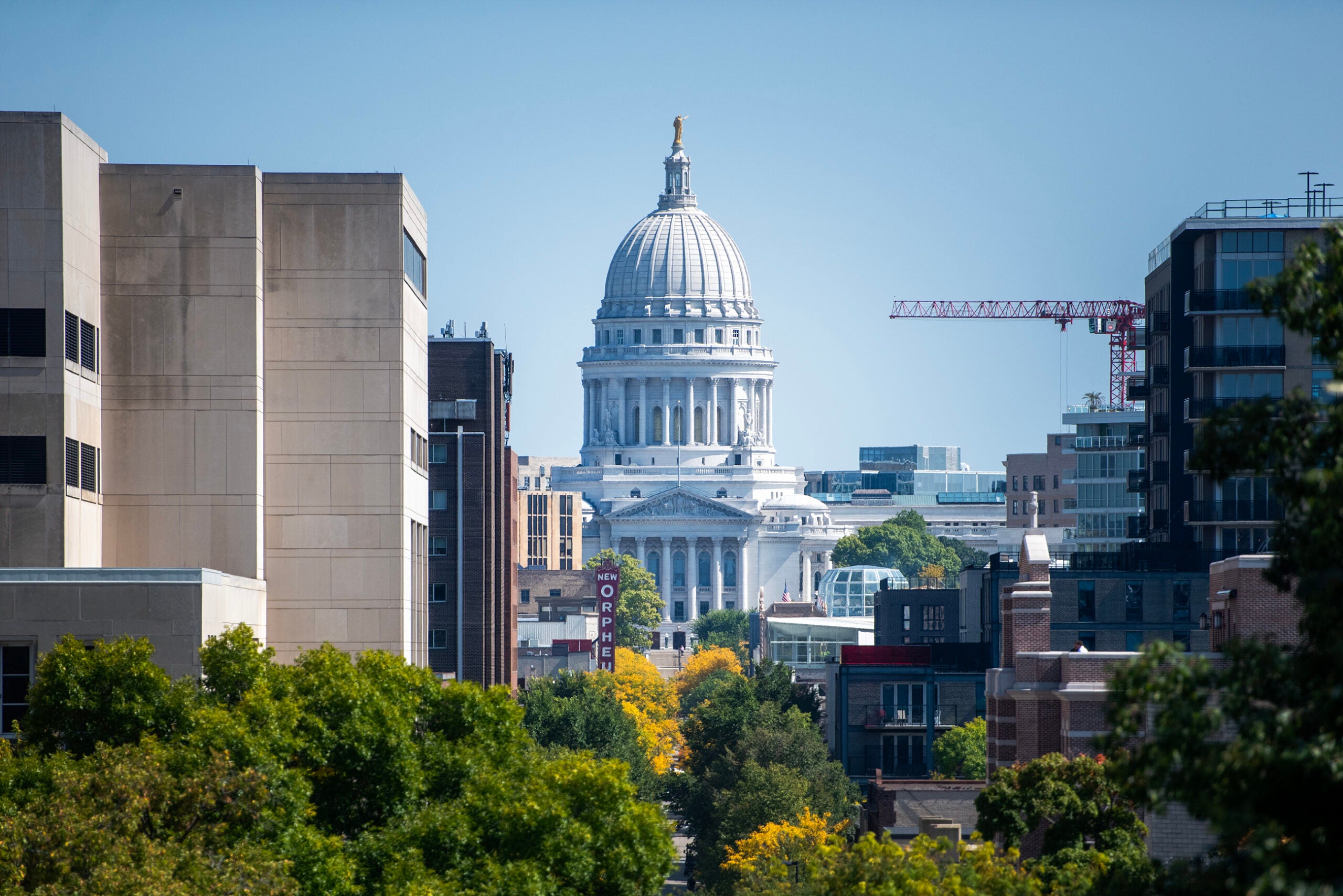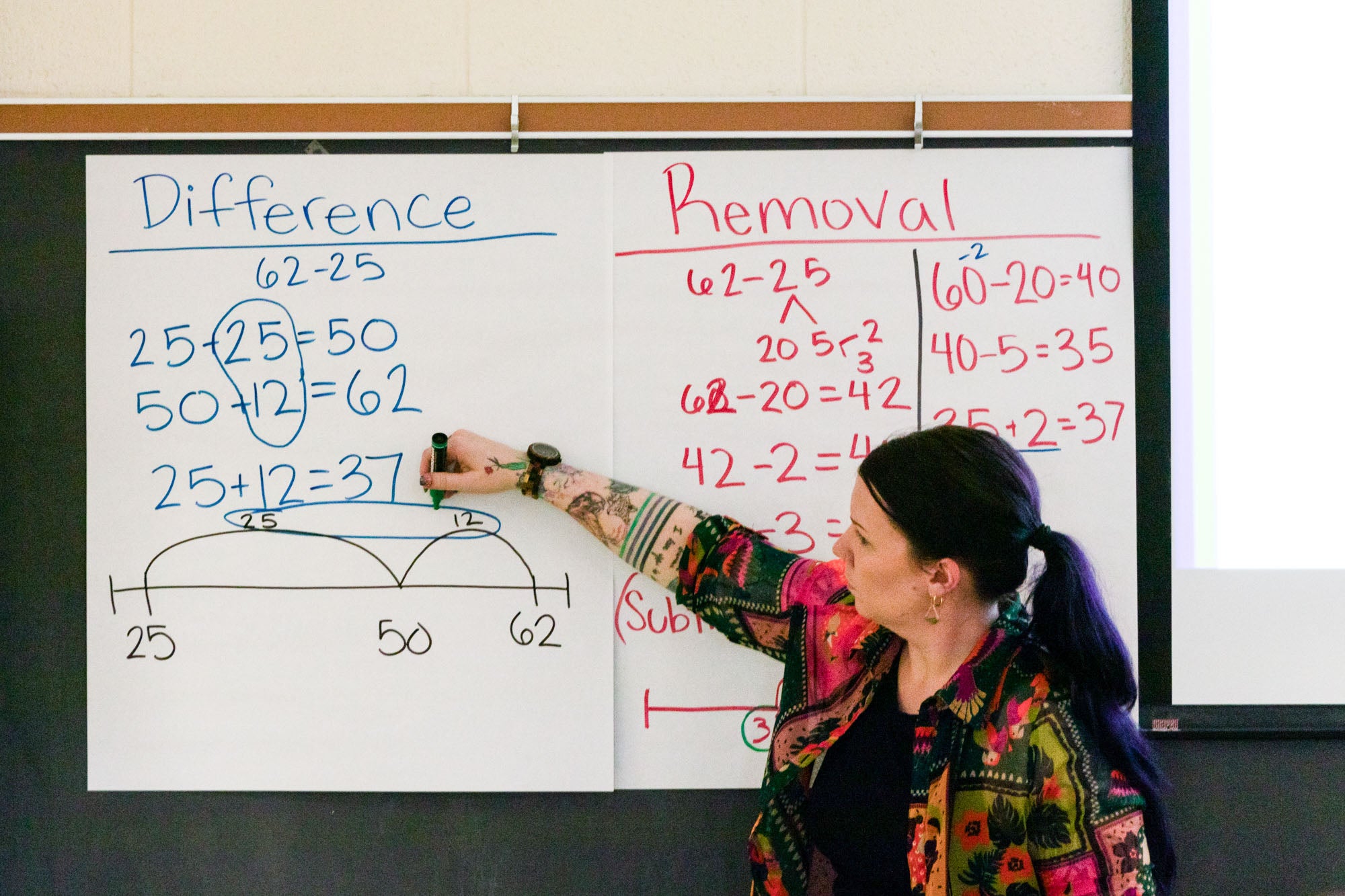As school districts scramble to fill teacher positions, more are hiring people with emergency licenses, according to a new report.
The Wisconsin Policy Forum reported the number of emergency teaching licenses issued has nearly tripled over the last decade.
The state Department of Public Instruction issued 3,197 emergency licenses last year, up from 1,125 in 2013. Roughly 100 more school districts across the state have employed teachers with emergency licenses since 2013 — jumping from 303 to 406 last year.
News with a little more humanity
WPR’s “Wisconsin Today” newsletter keeps you connected to the state you love without feeling overwhelmed. No paywall. No agenda. No corporate filter.
“It’s indicating that we don’t have people that want to become teachers, and if education is important to us, how do we promote our best and brightest in society to want to become educators instead of scrambling to find someone at the last minute that can fill a position?” said Don Cramer, lead author of the report.
The state can issue emergency licenses — one-year licenses with stipulations — to people with a bachelor’s degree in any subject area. Those teachers don’t have to be fully certified, and the emergency licenses can be renewed for those working to meet the requirements of a full license.
Urban schools employed 42 percent of people with emergency licenses, compared to rural schools at 33 percent, suburban schools at 14 percent and town schools at 7 percent, according to the report. Yet the general increase in their use occurred across the state.
Cramer said the distribution of emergency licenses reflects a long-term trend, and the pandemic didn’t play a disproportionate role in the report’s findings. He said the report’s findings suggest teachers are taking an alternative route to licensure. Instead of going through extra schooling, more are “getting the experience right off the bat.”
“It seems like more often people are becoming second career teachers,” Cramer said.
In a statement to Wisconsin Public Radio, DPI Director of Licensing, Educator Advancement and Development Jennifer Kammerud said a growing number of people are seeking these one-year licenses.
“This flexibility is available to those who meet minimum requirements and is renewable for those who are working on meeting the requirements of a full license,” she said in an email.
Kammerud said retention remains an important issue, pointing to data from the Educator Preparation and Workforce Analysis report in 2021. It shows that enrollment in educator preparation programs remains below 2008-09 levels. And while Wisconsin outpaces neighboring states for the number of students enrolling in teaching degree programs, fewer are completing them.
Over the last decade, educator salaries and wages have been falling. According to data from DPI, the median educator salary in Wisconsin dropped from $61,663 in 2010 to $56,249 in 2021.
The Wisconsin Policy Forum found that many educators hold on to their emergency licenses for multiple years.
“We don’t really have the why’s behind it,” Cramer said. “But when we looked at which licenses seem to be repeating, the big categories that are getting emergency licenses are cross-categorical, special education and elementary, middle school education.”
The cross-categorical, special education openings were more often filled by a person with an emergency license. In 2022, 761 licenses were issued in those areas, compared to 263 in 2013, representing about one-quarter of the total increase in emergency licenses. For classroom teachers, emergency licenses grew by about 23 percent, and elementary and middle school licenses rose by 13 percent.
Dan Rossmiller, director of government relations at the Wisconsin Association of School Boards, said the profession has become less attractive for a variety of reasons, including social and economic pressures of the work. He added that many teachers have found they can make more money elsewhere.
“Teachers are under a lot more scrutiny. They’re under a lot more pressure. They’re a bunch more subject to criticism than they have been in the past,” he said.
The report also raises questions about short- and long-term solutions.
“Is there enough support for teachers that are entering the profession this way? Because if they don’t have as much background and as much exposure to teaching philosophies, are they going to get burned out and just perpetuate the issue?” Cramer said.
Leaders say districts, teachers need more resources
Rossmiller of the Wisconsin Association of School Boards said schools need more resources to figure out ways to make teaching more effective.
“I think turning down the temperature on some of the controversy surrounding schools, helping kids who are showing interest in becoming teachers to get some advanced college credits so that it’s not as burdensome for them in terms of earning their degrees, and coming out with so much student loan debt,” he said.
Kammerud of DPI also pointed to Gov. Tony Evers’ 2023-25 biennial budget proposal, which she said would advance the department’s initiatives.
She said increasing the revenue limit — or how much funding a school district is entitled to — would give “school districts the ability to provide competitive wages, mentoring, classroom support, and professional development to ensure teachers have the tools needed to persist in the profession.”
Kammerud said Evers’ budget also calls for funding to provide stipends to student teachers and interns, along with a new grant program that would reimburse the cost of grow-your-own educator programs.
“These programs help teachers and staff obtain further licensure and encourage current students to enter the teaching profession,” she said.
Editor’s note: This story has been updated to reflect there were 236 emergency teacher licenses in the special education category issued in 2013.
Wisconsin Public Radio, © Copyright 2026, Board of Regents of the University of Wisconsin System and Wisconsin Educational Communications Board.
